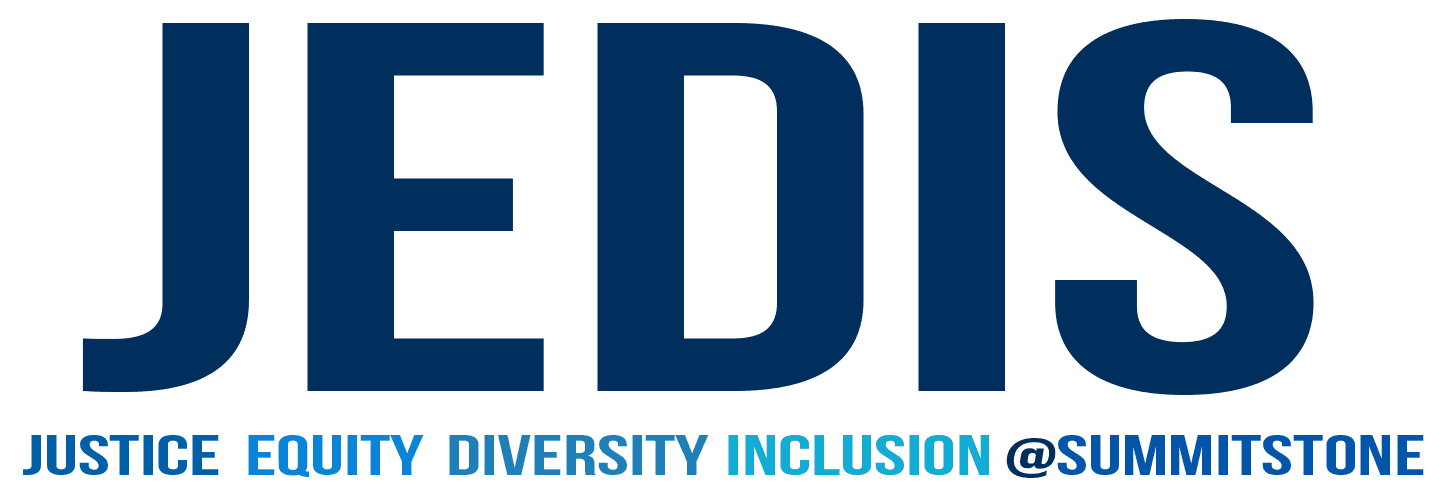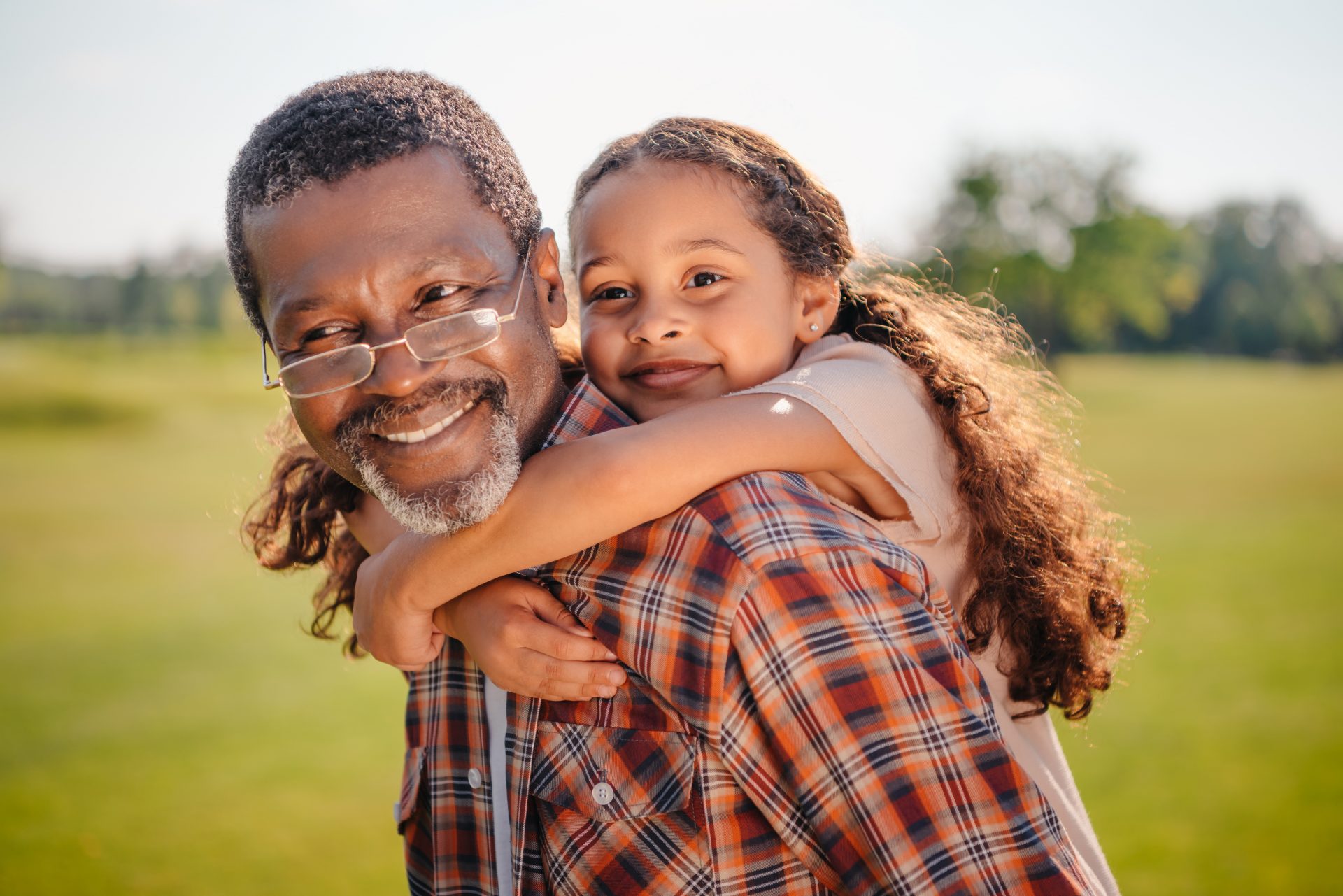Justice, Equity, Diversity & Inclusion
JEDIS
SummitStone Health Partners places high importance on being a place where all our staff, clients, and partners are comfortable. For decades, SummitStone has had committees focused on this work. Our current committee is JEDIS (Justice, Equity, Diversity, and Inclusion at SummitStone). JEDIS is comprised of staff members from across our agency, as well as a consumer’s voice. Its purpose is to examine our system and propose any improvements necessary to make our agency just, equitable, diverse, and inclusive for all.
SummitStone is dedicated to promoting diversity, multiculturalism, and inclusion. Diversity is more than a commitment at SummitStone- it is the foundation of what we do. We are fully pledged to equity and believe deeply in diversity of race, gender, age, sexual orientation, religion, ethnicity, and national origin. At SummitStone we have a clear vision: to be the place where a diverse mix of talented people want to come, to stay and do their best work.
JEDIS Goals
JEDIS recognizes that behavioral healthcare disparities exist across the many different strata that comprise “culture,” such as language, ethnicity, race, religion, sexual orientation, gender identity and/or expression, sex and gender, socioeconomic status, age, and ability status. We also recognize the influence that culture has on many issues related to behavioral health care, including barriers to service, attitudes towards recovery, beliefs about mental illness and substance use/addictions, and help-seeking behaviors. Culture also influences our staff and the communities that we serve.
With this in mind, the goals of JEDIS are:
- Create, review and update an E.D.I. I Strategic Plan that feeds into the SummitStone Strategic Plan.
- Complete and utilize assessments to determine needs and create a strategic plan.
- Make recommendations to the Senior Leadership Team and the Board regarding JEDI topics, such as changes to policies and procedures, etc., in the following areas:
- Internal, staff focus
- External, client and community focus
- Training around E.D.I. issues





JEDIS Value Statement
SummitStone Health Partners prioritizes justice, equity, diversity and inclusion. We know that these values are essential for us to fulfill our mission of providing unsurpassed behavioral health services, including prevention, intervention, and treatment.
Our foundation is built on justice and equity. We understand the realities of discrimination and oppression that people have experienced personally, institutionally, and systemically throughout history and today. We work to recognize when this injustice occurs and challenge it head-on. We also promote equity within our sphere of influence so that one’s identity and circumstances do not limit their access to what they need. We recognize that true equity takes time, and we are putting in the time.
SummitStone is committed to fostering a diverse and inclusive environment, honoring each individual’s whole self by embracing differences in race, ethnicity, ability, age, gender, sexual orientation, spiritual beliefs, socioeconomic status, language, and the inherent intersections of many different identities.
We strive to celebrate the incredible diversity found in our employees, the people we serve, and our communities at large, including their culture, heritage, and traditions. The communities we serve are founded on diverse perspectives and histories, and we understand the importance of being champions for our community.
We are committed to taking action on these values by listening, training, continually learning, implementing change, and transparently tracking success. This is not just philosophy for us. Our intention is to make the necessary changes to truly create a climate where everyone feels like they belong.
Mental Health Resources & Information
Addressing barriers to mental health treatment for immigrants and refugees
Immigrant and refugees are often faced with an increase in emotional disturbances. This is often due to the difficult circumstances in their homeland (which likely led to the decision to emigrate); separation from family/friends and culture, difficult journeys to the United States, and detention in camps, etc. Additionally, following their arrival in the United States, stressors can include discrimination, poverty, underfunded schools, lack of cultural competency among providers, and the challenges of assimilation, etc.
As a result of traumas and stressors faced by this population, studies have shown that they are at a higher risk for mental health problems. However, immigrants and refugees generally face barriers to access of mental health services and are frequently underserved; for example, Latino and Asian immigrants used mental health services at half the rate of U.S.-born members of the same racial-ethnic groups.
What can we do as mental health workers?
Work towards behavioral health equity, learn how to get involved with minority mental health, and learn more about individual experiences.
According to the American Foundation for Suicide Foundation, July is minority mental health month. They use their platform to elevate voices for underrepresented racial and ethnic groups. In a graphic published by Mental Health America it says ”18.3% of the U.S. Population is estimated to be Latino or Hispanic, over 16% reported having a mental illness in the past year.”
This year is a little different than most. Communities are also having to overcome dealing with COVID-19 and how that Is impacting them. This pandemic has put these oppressed communities into more stress because of the disadvantage with access to healthcare. SAMHSA which is the Substance Abuse and Mental Health Administration wrote, “Given the existing impediments to care for Blacks and Latinos due to social determinants of health, COVID-19 pandemic will place those with behavioral health problems at even higher vulnerability.” This correlates to the many individuals experiencing homelessness or have been previously incarcerated which also puts them at a high risk of suffering the repercussions of COVID-19.
What can we do to help on a communication and awareness level?
Language translation – English language is constantly changing based on new healthcare information, translation and comprehension are important.
Culturally tailoring messages – communication of concepts is not typically the same across different cultures and background and appropriate measures can be taken in effort to make others comfortable.
Established communication channels – information channels, TV, radio can vary across communities so updates of COVID testing, healthcare services and federal updates are not as available.
Inclusion and diversity in the workplace
Please take a moment to view this video that features people from a variety of backgrounds and identities (race, sexual orientation, gender identity, age, family life, etc.) describe how they have felt excluded in the workplace and how they are working to empower themselves to make change in the workplace.
Educate yourself on minority mental health disparities to make a difference
While Black Americans may not experience mental illness and/or substance abuse at a higher rate than other races, studies show barriers and access to behavioral health care remain an issue for this community. According to the 2018 National Survey on Drug Use and Health, 8.7 of non-Hispanic Blacks received mental health services in the past year compared to 18.6 percent of whites. Why is this? Some reasons may include stigma, lack of provider cultural competence, distrust (based on historical experimentation on Black people and other People of Color – POC), lack of providers and specifically, providers of color, provider bias, barriers to care, health inequity, etc.
Furthermore, according to the Health and Human Services Office of Minority Health, Black Americans are more likely to experience “symptoms of emotional distress, such as sadness, hopelessness, and feeling like everything is an effort. Black adults living below the poverty line are more than twice as likely to report serious psychological distress than those living above it.”
Lastly, racial trauma contributes to higher rates of PTSD among People of Color, including Black Americans. According to Monnica T. Williams, PhD, ABPP, is a board-certified clinical psychologist and Associate Professor at the University of Connecticut in the Department of Psychological Sciences, “racial trauma can result from major experiences of racism such as workplace discrimination or hate crimes, or it can be the result of an accumulation of many small occurrences, such as everyday discrimination and micro-aggressions.” https://www.apa.org/pubs/highlights/spotlight/issue-128
What can we do as mental health workers?
Educate Yourself. Learn what systemic racism and its impact is.
Active Listening and Reflecting. Actively listen and engage when clients of color discuss how systemic racism impacts their wellbeing and mental health.
Staying Connected. Encourage POC to connect with their community for support.
Please see the following resources for additional information:
Stress & Trauma Toolkit for Treating African Americans in a Changing Political and Social Environment https://www.psychiatry.org/psychiatrists/cultural-competency/education/stress-and-trauma/african-americans
The Loveland Foundation is the official continuation of this effort to bring opportunity and healing to communities of color, and especially to Black women and girls. Through fellowships, residency programs, listening tours, and more, ultimately we hope to contribute to both the empowerment and the liberation of the communities we serve. https://thelovelandfoundation.org/about/

